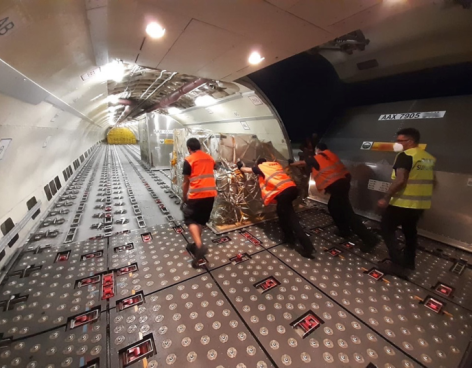Understanding ULD Limitations:
Ensuring Safe and Efficient Air Cargo Operations

In our daily lives, we encounter limitations, whether it's how fast we can run or how much we can carry. Similarly, engineered products, including aircraft and Unit Load Devices (ULD), have their own set of limitations that must be understood and respected. Ignoring these limitations can have catastrophic consequences, particularly in the aviation industry where safety is paramount.
Exploring ULD Limitations
Aviation, like any other industry, operates within strict limitations. From maximum load capacity to dimensional constraints, ULD operations are governed by many regulations and guidelines. All stakeholders involved in air cargo operations need to familiarize themselves with these limitations to ensure safe and efficient operations.
Understanding Key Limitations
Maximum Gross Weight: Exceeding the maximum loaded weight of a ULD can compromise cargo restraint during flight, posing significant safety risks.
Maximum Contour: Precisely defined external dimensions ensure proper fitment within the aircraft, preventing damage to both the ULD and the aircraft structure.
Maximum Area Load: Concentrated mass exceeding aircraft floor limits can lead to structural damage and costly repairs.
Maximum Linear Load: Excess mass along the length of the aircraft can damage the floor structure.
Maximum Centre of Gravity Offset: Deviations from the specified center of gravity limits can jeopardize aircraft locking systems under severe loads.
Maximum Allowable Damage: ULDs must adhere to specified damage limitations to remain airworthy and safe for flight.
Maximum Durability: Components of ULDs have limitations to their strength, ensuring structural integrity under operational conditions.
Maximum Strength of Packaging Materials: Packaging must withstand flight conditions to prevent contents from becoming insecure.
Maximum Weight of Single Items: Special precautions must be taken for items exceeding 150 kg to ensure proper restraint and safety.
Importance of Compliance
While these limitations may seem complex to those unfamiliar with aircraft and ULD operations, they are crucial for ensuring safety and preventing damage. Compliance with these limitations is non-negotiable, as they form the foundation of safe air cargo operations.
In conclusion, understanding and adhering to ULD limitations are essential for the safety and efficiency of air cargo operations. By familiarizing themselves with regulations and guidelines, stakeholders can ensure that ULD operations are conducted within safe parameters, thereby mitigating risks and upholding industry standards. Safety is everyone's responsibility, and knowledge of limitations is fundamental to maintaining it in air cargo operations.
How Can We Help You
Welcome to CargoSecures, your trusted partner in air cargo safety. How can we tailor your order today? Specify your requirements below, from customizable aesthetics to ultra-durable nets and webbing crafted with the world’s strongest yet lightest fiber. Let's craft a solution that ensures your cargo reaches its destination securely with the least added weight.
